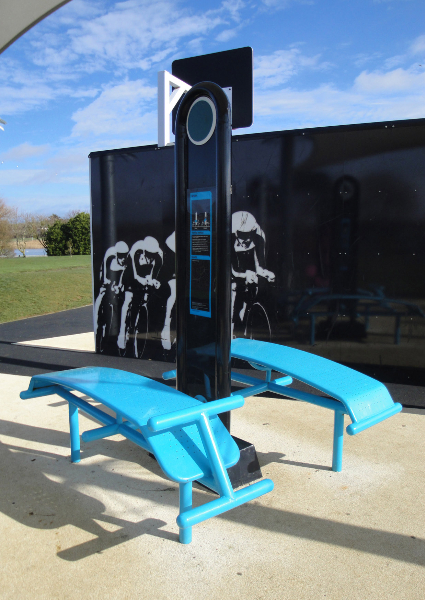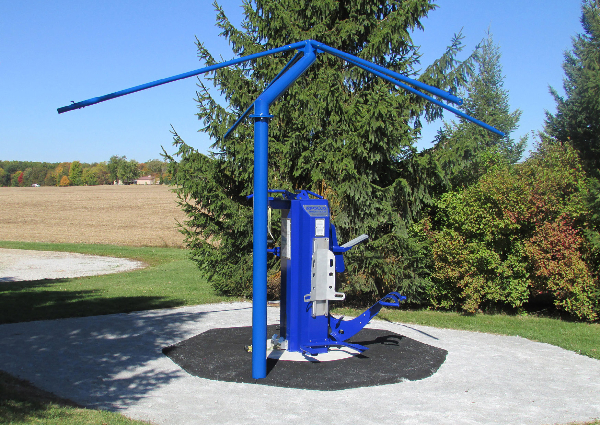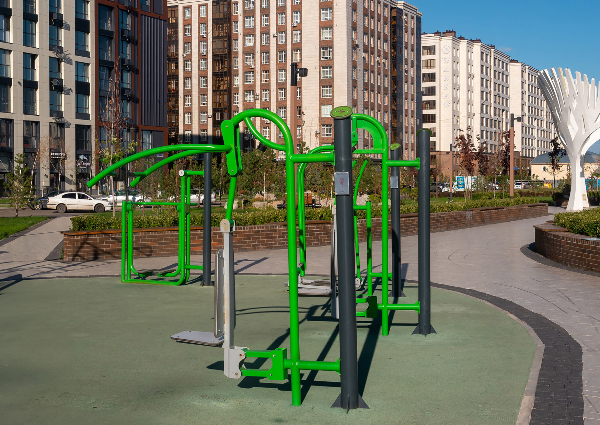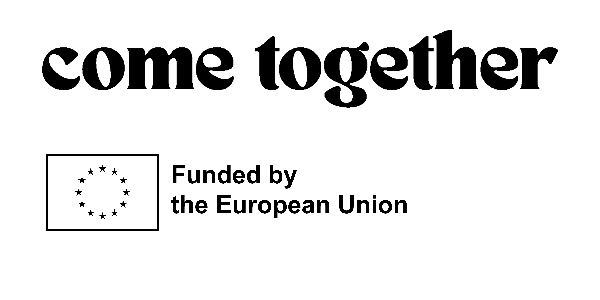The Soul, the Mind, the Body of Work
Door Stan Van Rompaey, op Thu Mar 27 2025 07:29:00 GMT+0000In een visueel essay doorkruist Stan Van Rompaey fitnessinstallaties in de publieke ruimte – een gezondheidsutopie overgenomen door body politics. Ze zijn symptomatisch voor ons tijdsgewricht en de wijze waarop we naar werk en kunst kijken. Maar ze bevatten ook een rebels potentieel. ‘What if on leg day, the arms get jealous?’
If you can’t recall the last time you encountered a ‘masterpiece’, drop and give me twenty: sweat now, shine later. The truth is you may not remember because we’ve collectively outsourced aesthetic pleasure to other realms – not so much by choice, but rather by default. People began to find a more comforting reality in the structures of body politics than in any artistic reproduction of it. And then, of course, there is the whole thing with being ‘multidisciplinary,’ which has replaced all essential concentration with totalising abstraction. With time, many have come to believe there is as much art in unfinishedness, frayed edges and a supposed ‘higher meaning’ as there is in the chutzpah of speaking-in-tongues. If art, or things in general, now feels as ran through as those polities, it’s because we cling to the idea that the process alone is enough to be transgressive. Three-page press releases have become the crutch for works that lack the courage of completion. Discovery is dead. Love is wasted. Something, something, capitalism — but I digress. No wonder everything has been stripped of singularity, it seems like no one wants to work these days?

What surrounds us is a lot of pacing through the labour of the past, hoping nostalgia could somehow lend contemporary relevance. Men, specifically, have been desperately reverting to poetry, or at least the sharing of it. And it’s charming until you realise that in making everything special, you’ve made nothing exceptional. Don’t get me wrong, it’s amusing to preserve the well-worn trope of the artist’s aversion to labour. It’s a Camp quality at this point. But when Mladen Stilinović slept in a gallery and called it Artist at Work, it was never about scratching the surface or playing coy — it was a hard pass on a society he wanted absolutely no part of. And while ‘no art without laziness,’ as Stilinović claimed, feels a bit too conclusive, I like to think he was implying ‘spare yourself the effort; we are only anti-capitalist in theory.’ So here’s the real question: in fetishising the non-work, what exactly are we working toward?

Body horror has come to illustrate our day-to-day media consumption: we are faced with the grim prospect of sun damage, filler migration, frontal lobe development and trips to Turkey. Health has undeniably become our new wealth — an aesthetic campaign enshrined even in the architecture of our cityscapes. Whoever first thought to democratise fitness by installing pull-up bars in local parks was onto something. And although these structures ended up being favoured by children and the elderly (not surprising, given they’re modelled after children’s playgrounds), they stood for a public health utopia — at least hypothetically. As expected, this new-found accessibility has displaced a certain bigheadedness, shared delusion, and self-imposed exile from reality, towards the whole idea of ‘wellness.’


Public fitness structures have, in part, become an ostentatious parade of surface-level effort. Instead of working towards self-improvement, the gym bros who flock to these candy-coloured contraptions likely put on a garb of self-display, going mask-for-mask in public parks and other urban spaces. Bodybuilders are performers by definition — they go to extremes to maintain their appearance. At the same time, exercise for the everyday person has transformed from private ritual to public theatre. Maybe this is all just part of ‘expressing ourselves,’ but when our convictions are the outcome of vanity, how then can we tolerate other people’s passion for themselves and for their own multiplication in these utopias? What if on leg day, the arms get jealous? Do Crayons Take Pride in Being Used The Most or Do They Envy The Ones That Remain in Pristine Condition? Such cases are neither comparable nor relevant and make no clear statement; however, they do underline this: we are locked in the endless pursuit of the ideal. And instead of becoming the idol, we settle for looking like it.


The problem isn’t the obsession with health, per se. It is that people became obsessed with the general vibe that health decorates their life with. Somewhere along the way, we collectively forgot the ‘why.’ If we borrow from Joseph Beuys’ philosophy, art itself has the quality of shaping society and transforming its environment. It was through his concept of ‘social sculptures’ that he invited audiences to engage with their own behaviours in order to make change in the bigger picture. Perhaps the fitness structures we find across parks today, do exactly that. The tools for ‘change’ are right in front of us. I’m not saying everything needs to be a protest against consumption. If anything, I’d argue we should manically consume more. Remember that the first step to recovery is addiction, and for us, people who clearly love working-towards-something, that whole process should leave behind a body of work to be proud of.


This article was published in the context of Come Together, a project funded by the European Union.